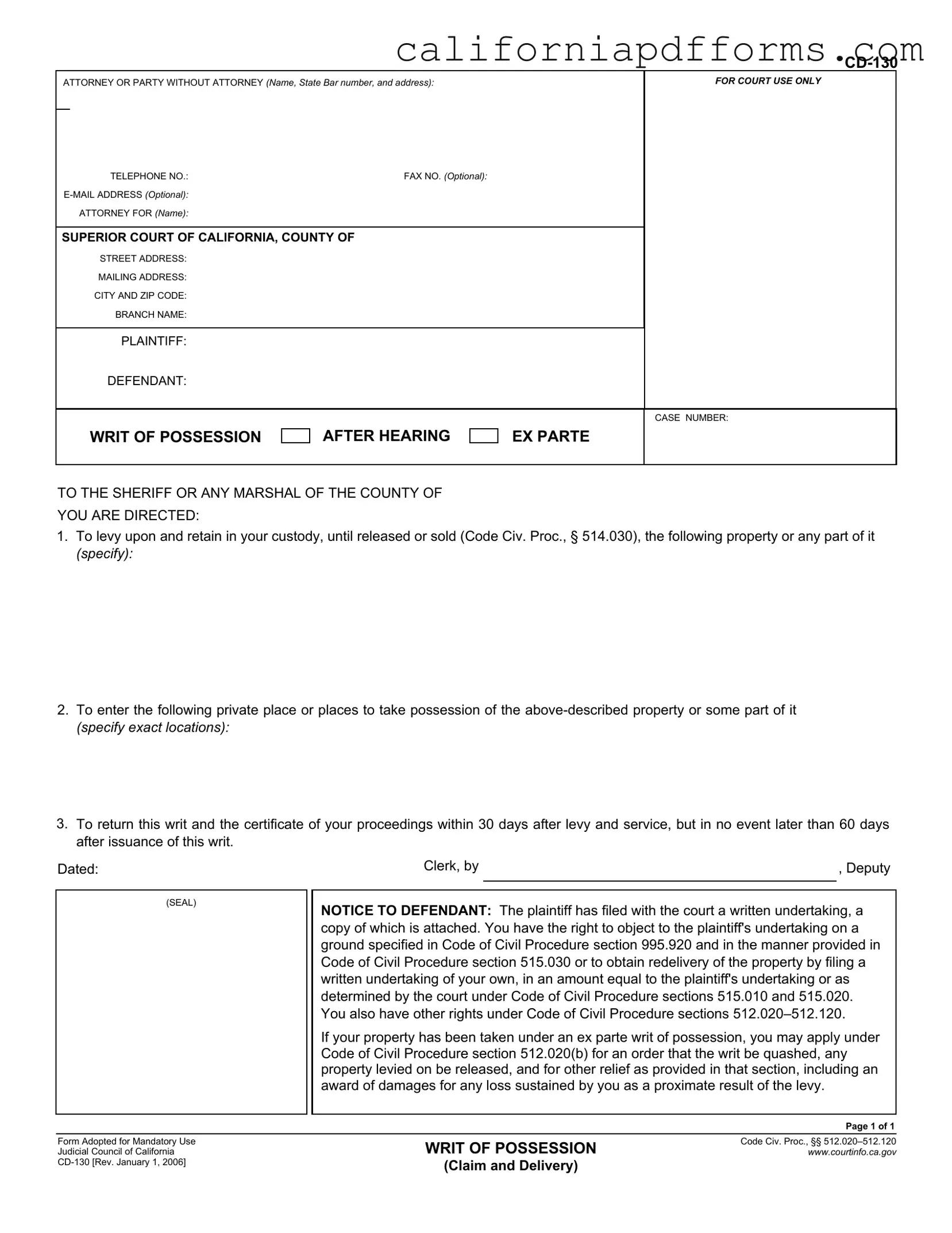The California CD-130 form is a legal document used to request a writ of possession after a court hearing. This writ allows a plaintiff to take possession of property that is in dispute. It is typically used in cases involving the recovery of personal property that has been wrongfully taken or retained by another party.
Any party involved in a legal dispute over personal property can file the CD-130 form. This typically includes plaintiffs who have won a judgment in their favor and wish to enforce that judgment by reclaiming their property. The form must be filed with the Superior Court of California in the appropriate county.
The CD-130 form requires several key pieces of information, including:
-
The name and contact information of the attorney or party filing the form.
-
The name of the plaintiff and defendant involved in the case.
-
A detailed description of the property to be seized.
-
The exact locations where the property is located.
-
The case number assigned by the court.
Accurate and complete information is crucial for the court to process the request effectively.
Once the CD-130 form is filed, the court will review it. If approved, the court will issue a writ of possession, which is then served to the sheriff or marshal. The sheriff or marshal is responsible for taking possession of the property as specified in the writ.
What rights does the defendant have?
The defendant has several rights under California law, including:
-
The right to object to the plaintiff's undertaking, as specified in the Code of Civil Procedure.
-
The right to file their own undertaking to regain possession of the property.
-
The right to apply for an order to quash the writ and seek damages if their property is wrongfully taken.
These rights provide a mechanism for defendants to contest the seizure of their property.
How long does the sheriff have to act on the writ?
The sheriff or marshal must return the writ and a certificate of their proceedings within 30 days after the levy and service. However, they must complete this process no later than 60 days after the writ is issued. Timeliness is essential to ensure compliance with court orders.
The CD-130 form is specifically designed for personal property. It is not applicable for real estate or other types of property. The law provides different procedures for handling real property disputes, which require separate legal processes.
What should I do if my property is taken under a writ of possession?
If your property is taken, you can apply for relief under the Code of Civil Procedure. This includes filing a motion to quash the writ and seeking the return of your property. Additionally, you may be entitled to damages if you can prove that the seizure caused you harm.
More information about the CD-130 form and the associated legal processes can be found on the Judicial Council of California's website. Additionally, consulting with a legal professional can provide guidance tailored to your specific situation.
